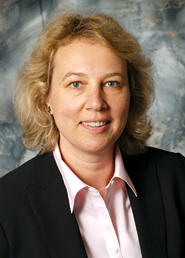With shrinking commission wallets, many buyside firms are consolidating their broker lists. And in choosing which brokers to work with, they are looking for consistency and focus, according to a recent report.
A full 83 percent of buyside firms interviewed by the Tabb Group said that it was consistency and focus that made for great coverage, whether it was from high-touch or low-touch brokerage desks.

"Despite the levels of technology that pervade the industry, trust is a basic factor that still underlies everything," said Miranda Mizen, a principal and director of equities research at the Tabb Group, and author of the report. "Trust is a fundamental basis for anything having to do with coverage."
The study, titled "U.S. Equity Trading 2011-2012: Coverage Under Fire," looked at how volatile markets and the rise of passively managed funds have been changing the way the buyside looks to do business.
Overall commissions increased an anemic 1 percent last year, and execution-only commissions fell a whopping 20 percent in 2011, Tabb found. If commissions don’t increase soon, 43 percent of firms plan to re-evaluate their broker list, according to the report.
"In order to stay on the list, you’ve got to have a value proposition that makes you indispensible to the buyside," Mizen said. "There are a lot of algorithms that the buyside said are very similar, so if you’re not differentiated in the execution field, then are you differentiated in the research field? It goes back to really great coverage."
In 2011, the average number of core brokers used by the buyside declined to 11.5, down from 12.2 in 2010. Though that number declined, the majority of survey respondents, 58 percent, said they were generally happy with their coverage.
Mizen said it isn’t just the bulge bracket that provides good coverage. The buyside gave many smaller firms high marks for their coverage when they provided them with excellent research on certain names.
The study also looked at what the buyside wants from algorithmic trading system providers. In selecting their algos, 83 percent of buysiders said it was product ease and familiarity that made providers stand out. Liquidity access, performance and the broker relationship were also qualities that stood out.
"Nobody wants to get familiar with a subpar algo," Mizen said. "But if you can reach liquidity through a number of algo providers, what’s going to make one stand out?"
The answer is the algo that’s most familiar. That can provide a challenge for providers trying to update and improve their algos. Mizen said if an incremental change isn’t enough to noticeably improve an algo, a trader might fall back on a more familiar product that works basically the same.
If an improvement is substantial, however, traders will definitely embrace the algo’s new innovation, Mizen said.
The top five providers of algorithmic trading systems-Credit Suisse, Goldman Sachs, ITG, Bank of America Merrill Lynch and UBS-are solidifying their advantage, according to the report. Credit Suisse, the most frequently mentioned algo provider, was often cited for its first-mover advantage, liquidity provision and differentiation in the dark space, Tabb wrote.
Tabb interviewed 68 head traders of U.S.-based equity desks for the study. Participating firms had a total of $9.8 trillion in assets under management.
(c) 2012 Traders Magazine and SourceMedia, Inc. All Rights Reserved.
http://www.tradersmagazine.com http://www.sourcemedia.com/



